13 September 335
Church of the Holy Sepulchre in Jerusalem is dedicated.
13 September 1755
"[I] got [Piranesi] to finish the whole of Rome and to publish it alone without joining in a book whose principal dedication was to my Lord Charlemont, which made mine less regarded, whereas mine being sold separate all the world will purchase it and have no other name to detract from the honour of the intention."
Robert Adam in a letter to his brother James.
13 September 1778 Sunday




Artifacts of the Bianconi vs Piranesi 'Circus of Caracalla' affair 1772-1789
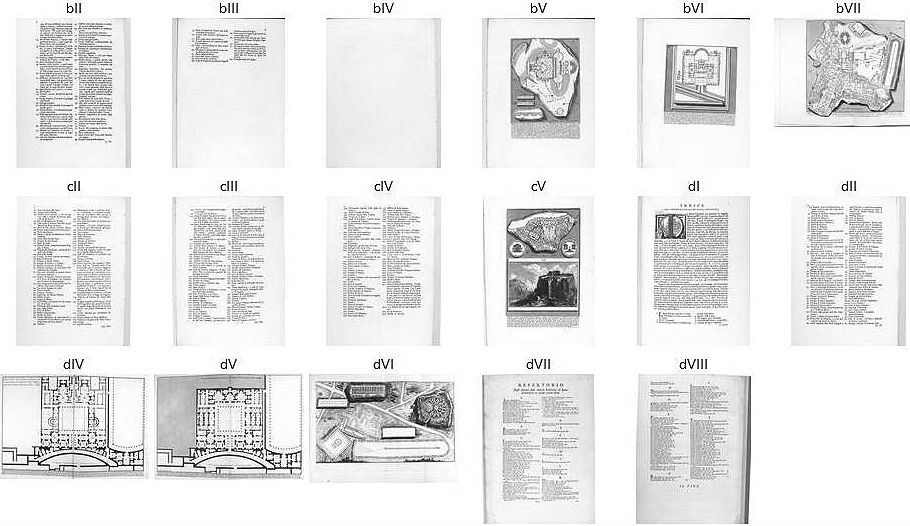
Le AntichitÓ Romane Tom. I
thumbnail views of the last pages
from University Library of Heidelberg
The University Library of Heidelberg's Le AntichitÓ Romane volume 1 ends with 'Pianta dell antico Foro Romano' being the fifth-to-last large engraving. This order does not conform with how Le AntichitÓ Romane volume 1 is authoritatively catalogued, and the plan of the Circus Maximus within the plan of the ancient Roman Forum is not as it was first drawn by Giovanni Battista Piranesi. Two of the large engravings appended to Le AntichitÓ Romane volume 1 are the work of Francesco Piranesi, the eldest son of Giovanni Battista Piranesi. These added engravings depict plans of the Palace of the Caesars on the Palatin Hill, and the third added engraving is unsigned and depicts the plan of the Circus of Maxentius on the Appian Way, although it is labeled as the Circus of Caracalla which is what the circus was believed to be in Piranesi's time. The subject matter of all three engravings relates directly to the changes made to the Circus Maximus within 'Pianta dell antico Foro Romano' the now fifth-to-last large engraving of Le AntichitÓ Romane volume 1.
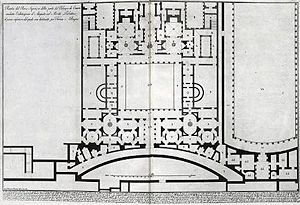 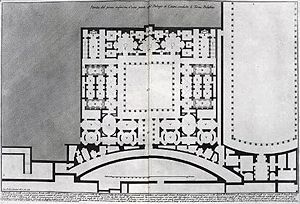 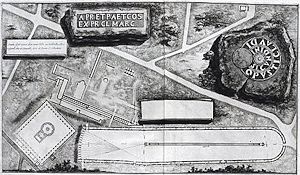
According to Henri Focillon (1918):
In some copies of [Le AntichitÓ Romane Vol 1] the second edition, after 1787, follow 3 plates.
1. Plan of the upper floor of part of the Palace of the Caesars ...
2. Plan of the lower floor of part of the Palace of the Caesars ...
Both signed Francesco Piranesi and dated 1787.
3. Plan of the leftovers from an ancient villa ... outside St. Sebastiano gate. -- not signed,
meaning, some copies of the second edition of Giovanni Battista Piranesi's Le AntichitÓ Romane vol. 1 have been appended with three additional plates--two plans of part of the Palace of the Caesars on the Palatine Hill, signed and dated Francesco Piranesi 1787, and a site plan of the Maxentian complex along the Appian Way, comprising a mausoleum, a villa/dining hall and a circus, which is not signed. Although the images of each added plate are more or less self-explanatory, the reason as to why these particular images have been added to the first volume of Le AntichitÓ Romane is nowhere provided.
It's interesting and worth noting that virtually the same three drawings show up in Pierre-Adrien PÔris's collection of drawings as well.
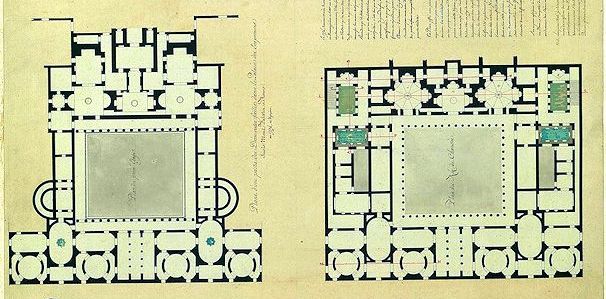 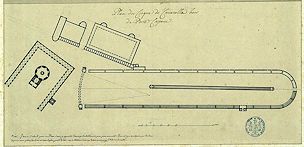
48 y.o. Francesco Piranesi 1806
Le AntichitÓ della Magna Grecia Parte III
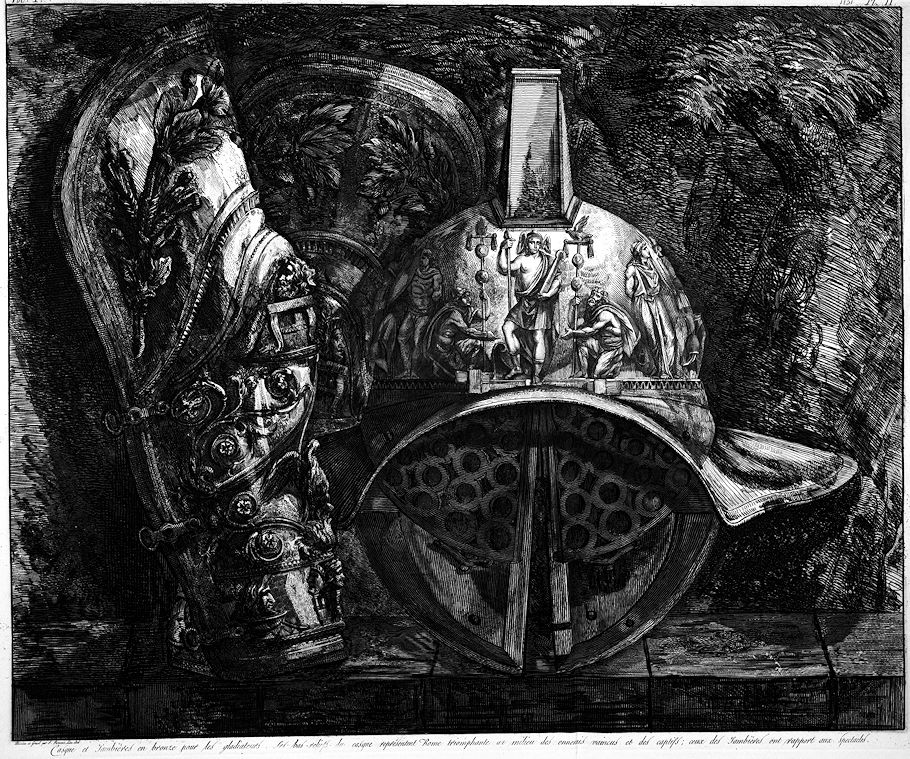
Bronze helmet and leggings for gladiators. The bas-reliefs of the helmet represent Rome triumphant in the midst of vanquished enemies and captives; those of the JambiŔr es relate to the shows.
Drawn and Engraved by F. Piranesi in 1806
13 September 1812 Sunday
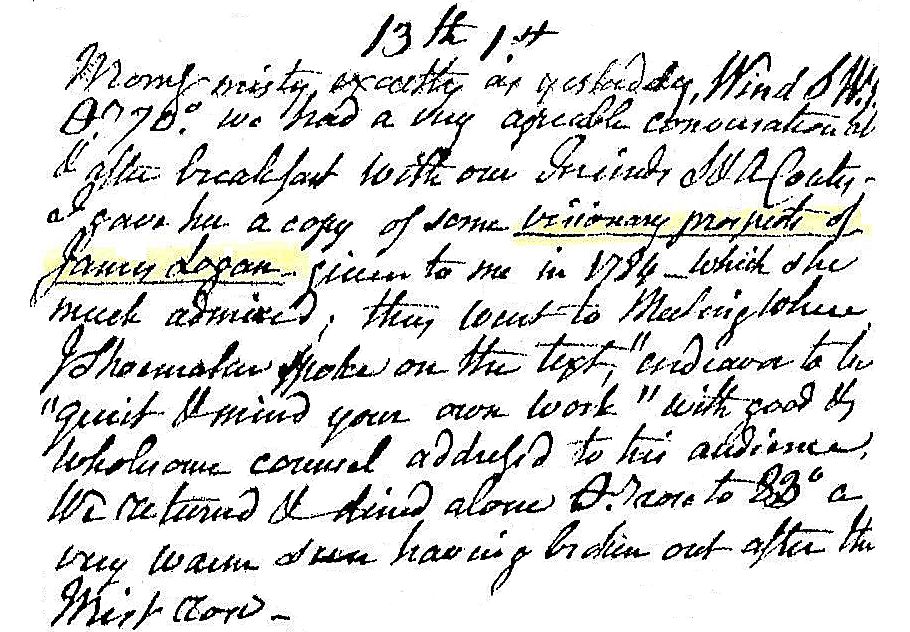
Morning misty exactly as yesterday, wind S westerly, temperature 70░. We had a very agreeable conversation at and after breakfast with our friends S and A Coates. I gave her a copy of some visionary prospects of James Logan--given to me in 1784--which she much admired. They went to Meetinghouse where J Shoemaker spoke on the text "endeavor to be quiet and mind your own work" with good and wholesome counsel addressed to his audience. We returned and dined alone. Temperature rose to 83░, a very warm sun having broke out after the must rose.
13 September 2001
Philadelphia churches, etc.
Louis I. Kahn taught his masters architecture class within the Furness Library at the University of Pennsylvania. Kahn refused to teach within the then new (modern) facility of the Graduate School of Fine Arts. Kahn greatly admired Furness.
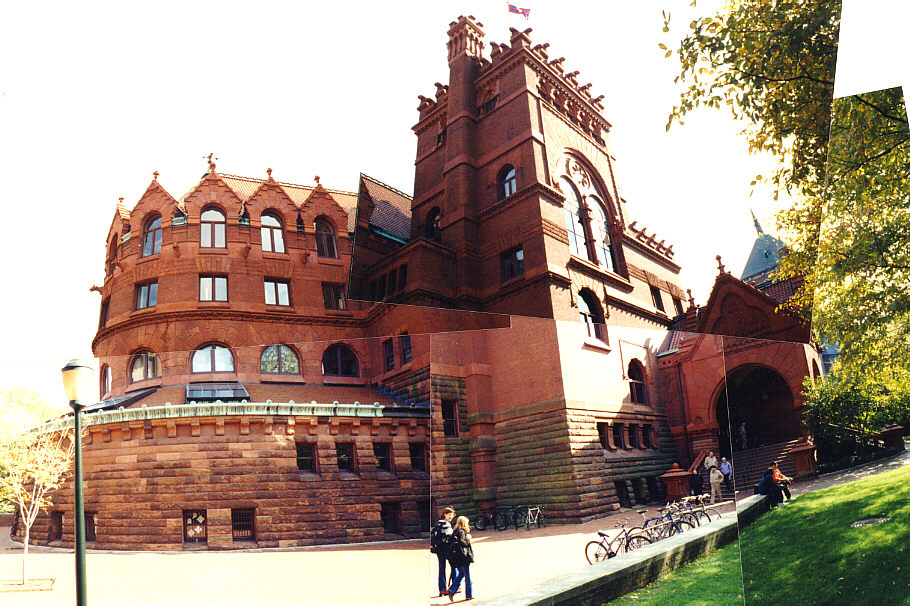
13 September 2010
Bufalini--Piranesi 01
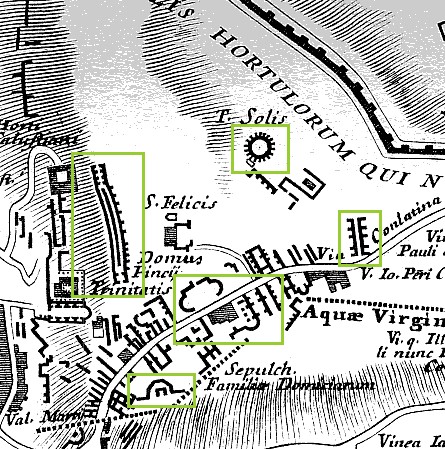 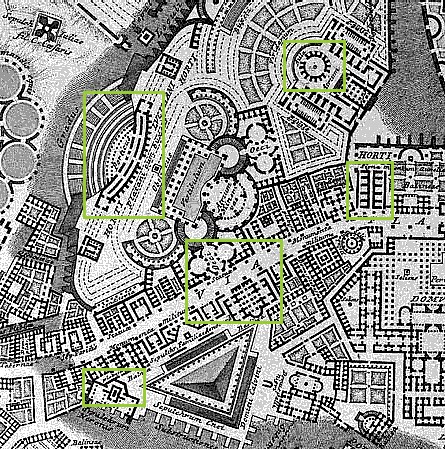
The Mons Pinicus section of Nolli's reduced copy of Bufalini's Ichnographia Urbis compared with the same area of Piranesi's Ichnographia Campus Martius.
Bufalini--Piranesi 02
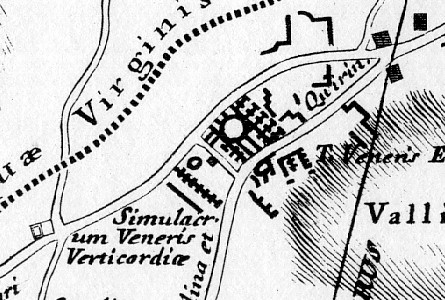 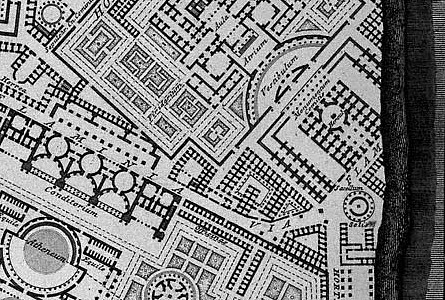
A far eastern section of Nolli's reduced copy of Bufalini's Ichnographia Urbis compared with the same area of Piranesi's Ichnographia Campus Martius, specifically the Monumentum Comitis Herculis.
13 September 2016
Celebrity-turned-"designer"-shitting-on-real-architect thread du jour
In the future, everything will be an advertisement.
In the future your whole life will be a phone call.
In the future, everything will be the same difference.
I embrace pop-out-of-it culture.
13 September 2022
"Prior to his research upon the Campus Martius, Piranesi had interested himself widely in the study of Roman antiquities. In addition to making the magnificence etchings, which are so highly esteemed, he also found time to prepare a survey of the Villa Adriana, near Tivoli, the immense palace of the Emperor Hadrian, which together with its gardens covers an area of about 160 acres. Possibly Piranesi's example may have encouraged Adam to undertake personally the direction of the survey at Spalato, to which reference has been made. To measure the palaces on the Palatine Hill was not possible, for the site had not then been excavated to any extent; in fact, systematic research was not commenced there until 1863. The Villa di Tiberio at Capri was even then an almost hopeless ruin, while the remains that have been exposed at either Herculaneum or Pompeii1 were not sufficiently extensive to make either place a suitable subject for the purpose. On the other hand, the Palace of Diocletian at Spalato was in an excellent state of preservation and had not previously been either properly measures or illustrated."
1. Herculaneum had only been discovered in 1719 and Pompeii in 1748.
John Swarbrick, Robert Adam & His Brothers: Their Lives, Work & Influence on English Architecture, Decoration and Furniture (New York: 1915), p. 57.
"...and Gibbon, according to Momigliano, owed his place in the history of historiography to his ability to reconcile his love for antiquarian scholarship with an ability to cast it in a beautiful and philosophical story. In all this, Piranesi was their colleague. Indeed, Lola Kantor-Kazovsky has suggested that one of his distinguishing features was his ability to present the fruits of antiquarian scholarship in an easily accessed narrative form. According to her, Piranesi effectively transformed the visual culture of Italian antiquarianism into something "painterly." The inquiring figures depicted amidst his ancient structures are emotionally engaged, as are those who view the scenes.21 Indeed, like Gibbon, Piranesi's achievement was no less than taking synchronic antiquarian research and transforming it into something diachronic, into a story."
21. Kantor-Kazovsky, Piranesi as Interpreter, pp. 85-87, 99.
Peter N. Miller, "Piranesi and the Antiquarian Imagination" in Piranesi as Designer (New York: Cooper-Hewitt, National Design Museum, 2007), p. 134.
13 September 2023 Wednesday
I told JP I'm glad the story is ending nicely, after I told him it was Francesco's plan of the Circus of Caracalla that Pierre-Adrien copied.
As soon as he met Pierre-Adrien as his architecture teacher, Francesco swanked.
"I already know how to survey ruins and draw their plans."
"Well then, you must show me your work."
Pierre-Adrien genuinely hoped to be impressed, but nonetheless was still surprised by the extent of the impression. Francesco's delineation of the Circus of Caracalla complex on the Appian Way was particularly impressive--simple in rendition, yet sophisticated in its subtle distinctions. Pierre-Adrien asked if he might make a copy of the plans, and Francesco was happy to have so quickly impressed his new architecture teacher. Turns out teacher and student discussed the Circus of Caracalla a lot, which was fine with Francesco because he knew so much about it.
Meanwhile, Piranesi, the one who taught Francesco how to survey ruins and subsequently draw their plans, and even Francesco at the same time, had no real idea of what Pierre-Adrien was furthermore up to with regard to the Circus of Caracalla. Of course, that all changed when Bianconi recognized a Piranesi hand in Pierre-Adrien's Circus of Caracalla work.
I also told JP that Francesco's plan and knowledge gave Pierre-Adrien a substantial head-start, and that's why he got so much good work done.
"He just didn't give [Francesco] any credit for it."
"That's the way it always is."
|